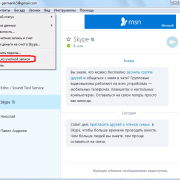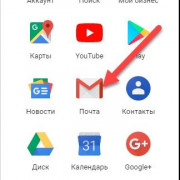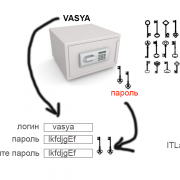Windows 10 enterprise ltsc
Содержание:
- Для кого предназначена?
- Upgrade using a provisioning package
- If I obtained Windows when I purchased a new device, who provides support?
- Building
- How does the end of support for Windows XP impact Windows Embedded products?
- Servicing
- Скачивание
- What are my installation options for Windows updates?
- В чем разница между Windows 10 LTSB от LTSC?
- Установка подсистемы Windows для LinuxInstall Windows Subsystem for Linux
- What is the Windows Lifecycle policy for Intel’s sixth generation of processors (also known as Skylake) released in late 2015?
- Мнения пользователей о Windows 10 Enterprise LTSB (LTSC)
- Устройства определенного назначенияFixed purpose devices
- Servicing tools
- Начало работыGetting started
- Каким образом прекращение поддержки Windows XP затрагивает продукты Windows Embedded?
Для кого предназначена?
В текущей версии системы преимущественно делается упор на весь сектор корпоративного использования Windows. На LTSB построено много систем в организациях здравоохранения, финансового учёта, систем производственного назначения и т.д. В общем во всех структурах, которые нуждаются в высокой стабильности и совместимости с необходимыми программами. Для перечисленных категорий функциональность и новинки – это бесполезные излишества.
Редакция понравилась не только организациям, но я ряду частных лиц, преимущественно профессионалам, которые Windows 10 применяют исключительно в рабочих целях и не желают мириться с многочисленным ненужным ПО. Также LTSB нравится многим пользователя благодаря схожести с Windows 7.
Мы проводили тестирования, в ходе которого было установлено:
- быстродействие значительно лучше, чем у стандартных редакций;
- комфортная работа возможна при слабых ресурсах компьютера;
- больше возможностей полной персонализации под нужды конечного пользователя.
Upgrade using a provisioning package
Use Windows Configuration Designer to create a provisioning package to upgrade a desktop edition or mobile edition of Windows 10. To get started, install Windows Configuration Designer from the Microsoft Store.
-
To create a provisioning package for upgrading desktop editions of Windows 10, go to Runtime settings > EditionUpgrade > UpgradeEditionWithProductKey in the Available customizations panel in Windows ICD and enter the product key for the upgraded edition.
-
To create a provisioning package for upgrading mobile editions of Windows 10, go to Runtime settings > EditionUpgrade > UpgradeEditionWithLicense in the Available customizations panel in Windows ICD and enter the product key for the upgraded edition.
For more info about Windows Configuration Designer, see these topics:
- Create a provisioining package for Windows 10
- Apply a provisioning package
If I obtained Windows when I purchased a new device, who provides support?
If you have a valid Windows license, you are eligible for support from Microsoft, subject to the Microsoft Lifecycle Policy and the support terms and conditions that were in place at the time of purchase. If you acquired your Windows operating system through the Microsoft Volume Licensing program or from an Original Equipment Manufacturer (OEM), Microsoft offers access to a wealth of online self-help support content in addition to paid technical help offerings. If you acquired your Windows operating system through an OEM, you may also contact your OEM for more information about the support offerings for Windows operating systems from that OEM.
Building
Prior to Windows 10, Microsoft released new versions of Windows every few years. This traditional deployment schedule imposed a training burden on users because the feature revisions were often significant. That schedule also meant waiting long periods without new features — a scenario that doesn’t work in today’s rapidly changing world, a world in which new security, management, and deployment capabilities are necessary to address challenges. Windows as a service will deliver smaller feature updates two times per year, around March and September, to help address these issues.
In the past, when Microsoft developed new versions of Windows, it typically released technical previews near the end of the process, when Windows was nearly ready to ship. With Windows 10, new features will be delivered to the Windows Insider community as soon as possible — during the development cycle, through a process called flighting — so that organizations can see exactly what Microsoft is developing and start their testing as soon as possible.
Microsoft also depends on receiving feedback from organizations throughout the development process so that it can make adjustments as quickly as possible rather than waiting until after release. For more information about the Windows Insider Program and how to sign up, see the section .
Of course Microsoft also performs extensive internal testing, with engineering teams installing new builds daily, and larger groups of employees installing builds frequently, all before those builds are ever released to the Windows Insider Program.
How does the end of support for Windows XP impact Windows Embedded products?
Windows Embedded products have their own distinct lifecycles, based on when the product was released and made generally available. It is important for businesses to understand the support implications for these products to ensure that systems remain up-to-date and secure. The following Windows Embedded products are based on Windows XP:
-
Windows XP Professional for Embedded Systems. This product is identical to Windows XP, and Extended Support ended on April 8, 2014.
-
Windows XP Embedded Service Pack 3 (SP3). This is the original toolkit and componentized version of Windows XP. It was originally released in 2002, and Extended Support ended on January 12, 2016.
-
Windows Embedded for Point of Service SP3. This product is for use in point of sale devices. It’s built from Windows XP Embedded. It was originally released in 2005, and Extended Support ended on April 12, 2016.
-
Windows Embedded Standard 2009. This product is an updated release of the toolkit and componentized version of Windows XP. It was originally released in 2008, and Extended Support ended on January 8, 2019.
-
Windows Embedded POSReady 2009. This product for point of sale devices reflects the updates available in Windows Embedded Standard 2009. It was originally released on 2009, and extended support ended on April 9, 2019.
Servicing
Traditional Windows servicing has included several release types: major revisions (e.g., the Windows 8.1, Windows 8, and Windows 7 operating systems), service packs, and monthly updates. With Windows 10, there are two release types: feature updates that add new functionality twice per year, and quality updates that provide security and reliability fixes at least once a month.
With Windows 10, organizations will need to change the way they approach deploying updates. Servicing channels are the first way to separate users into deployment groups for feature and quality updates. With the introduction of servicing channels comes the concept of a deployment ring, which is simply a way to categorize the combination of a deployment group and a servicing channel to group devices for successive waves of deployment. For more information about developing a deployment strategy that leverages servicing channels and deployment rings, see Plan servicing strategy for Windows 10 updates.
For information about each servicing tool available for Windows 10, see .
To align with this new update delivery model, Windows 10 has three servicing channels, each of which provides different levels of flexibility over when these updates are delivered to client computers. For information about the servicing channels available in Windows 10, see .
Naming changes
There are currently two release channels for Windows 10:
- The Semi-Annual Channel receives feature updates twice per year.
- The Long Term Servicing Channel, which is designed to be used only for specialized devices (which typically don’t run Office) such as those that control medical equipment or ATM machines, receives new feature releases every two to three years.
Important
With each Semi-Annual Channel release, we recommend beginning deployment right away to devices selected for early adoption (targeted validation) and ramp up to full deployment at your discretion. This will enable you to gain access to new features, experiences, and integrated security as soon as possible. The «Semi-Annual Channel (Targeted)» designation is no longer used. For more information, see the blog post Windows 10 and the «disappearing» SAC-T.
Note
For additional information, see the section about .
You can also read the blog post Waas simplified and aligned, with details on this change.
Important
Devices on the Semi-Annual Channel must have their diagnostic data set to 1 (Basic) or higher, in order to ensure that the service is performing at the expected quality. For instructions to set the diagnostic data level, see .
Feature updates
With Windows 10, Microsoft will package new features into feature updates that can be deployed using existing management tools. Because feature updates are delivered more frequently than with previous Windows releases — twice per year, around March and September, rather than every 3–5 years — changes will be in bite-sized chunks rather than all at once and end user readiness time much shorter.
Quality updates
Monthly updates in previous Windows versions were often overwhelming because of the sheer number of updates available each month. Many organizations selectively chose which updates they wanted to install and which they didn’t, and this created countless scenarios in which organizations deployed essential security updates but picked only a subset of non-security fixes.
In Windows 10, rather than receiving several updates each month and trying to figure out which the organization needs, which ultimately causes platform fragmentation, administrators will see one cumulative monthly update that supersedes the previous month’s update, containing both security and non-security fixes. This approach makes patching simpler and ensures that customers’ devices are more closely aligned with the testing done at Microsoft, reducing unexpected issues resulting from patching. The left side of Figure 1 provides an example of Windows 7 devices in an enterprise and what their current patch level might look like. On the right is what Microsoft’s test environment devices contain. This drastic difference is the basis for many compatibility issues and system anomalies related to Windows updates.
Figure 1

Скачивание
3.1. Evaluation Center
Win10 LTSC доступна для загрузки на сайте Evaluation Center — официальном ресурсе Microsoft, где выложено всё бесплатное оценочное ПО — по адресу:
Чтобы получить доступ к загрузке этого оценочного ПО, необходимо на сайте залогиниться с использованием учётной записи Майкрософт. Логинимся, выбираем раздел «Оценить сейчас» и – «Windows 10 Enterprise».

Далее указываем пункт «ISO — LTSC».

Заполняем вопросник Microsoft, указываем нужную разрядность, язык (русского дистрибутива, кстати, нет) и скачиваем.

3.2. Сайт by adguard
Альтернативный источник загрузки дистрибутива LTSC – сайт by adguard, проект энтузиастов, содержащий дистрибутивы многих продуктов Microsoft, в частности, Windows. Здесь не нужно никакой авторизации, да и отдача серверов чуть щедрее, чем на сайте компании.
Идём по адресу:
Указываем тип дистрибутива, как показано на скриншоте ниже, и скачиваем ISO нужной разрядности.

Русификация
Отсутствие русскоязычного дистрибутива LTSC не является проблемой. В Windows 10 перевод системы на любой другой язык упрощён. В ней все необходимые настройки собраны в одном месте. Идём в раздел параметров «Time & language» (если дистрибутив выбирался на английском).

В подразделе «Language» жмём «Add language».

Прописываем в поиске «russian», жмём «Next».

Далее – «Install».

После этого кликаем «Administrative language settings».

Жмём «Copy settings», выставляем внизу две галочки, кликаем «Ок».

Отказываемся от перезагрузки.

Жмём «Change system locale», выставляем «Russian», ставим галочку использования UTF-8. Кликаем «Ок».

А вот теперь уже можем перезагружаться.

Сброс активации
Win10 LTSC – это, как упоминалось, система, поставляемая бесплатно в рамках проекта оценки ПО Microsoft с легальной активацией на 90 дней. Но этот срок можно увеличить до 360 дней, если по истечении каждый 90 дней трижды сбросить активацию.
Как сбросить?
Нам нужна командная строка.

Вводим:
slmgr -rearm
И перезагружаемся.

What are my installation options for Windows updates?
It is highly recommended that customers install the latest feature update to stay up to date with the latest security updates, as well as to continue receiving future feature updates, with less impact on IT processes and infrastructure.
To help reduce the burden on network bandwidth, Microsoft designed two different update types: Full and Express1.
If needed, customers may defer semi-annual Feature Updates via Settings > Windows Update > Advanced options or via an organization’s device management policies.
On devices that do not defer the installation of feature updates, the subsequent Semi-Annual Channel version of Windows 10 may be automatically offered and installed prior to the end date. Update deferral is not available for all versions of Windows 102. Please see Windows as a Service (WaaS) for information on release channels and the Windows 10 release information page for additional update details.
Not all features in a feature update will be available on all devices. Similarly, a device may not be able to receive updates if the device hardware is incompatible, lacks current drivers, lacks sufficient storage space, or is otherwise outside the original equipment manufacturer’s (OEM) support period. For more information on compatibility, review the Windows 10 System Requirements as well as the Windows Processor Requirements.
Update availability may vary by country, region, network connectivity, mobile operator (e.g., for cellular-capable devices), or hardware capabilities (including, e.g., free disk space).
1As of April 9th, 2019 Delta Updates are no longer be available. To learn more, go here.
2Windows 10 Home does not support the deferral of feature updates and will therefore typically receive a new version of Windows 10 prior to the end-of-service date shown.
В чем разница между Windows 10 LTSB от LTSC?
Нужно понимать, что Windows 10 LTSB – это аналогичная, но более старая версия LTSC. По этой причине больших отличий между перечисленными системами нет. Из замеченных отличий можем выделить – отсутствие предустановленного клиента OneDrive, а ведь он был в LTSB. Есть и другая разница, но она сводится только к отличиям между версиями обновлений 1809 и 1607.
Главная причина перехода к обновленной версии – Windows 10 корпоративная LTSC отличается немного большим быстродействием. В режиме простоя количество процессов выше, чем у LTSB (70 по сравнению с 60), но нагрузка на ПК значительно меньше. В старой версии на тестируемом стенде без нагрузки процент загрузки процессора составлял 10%, а в LTSC – 2-4%.
Многие пользователи отдают предпочтение LTSC благодаря высоким показателям стабильности и оптимизации содержимого
Отмечается устранение излишеств и возможность избавиться от ненужной нагрузки на ПК, что важно для владельцев маломощных ПК. Данная редакция на продаже в магазинах отсутствует, описанный метод является единственным способом загрузки
Установка подсистемы Windows для LinuxInstall Windows Subsystem for Linux
Существует две версии подсистемы Windows для Linux (WSL), которые можно выбрать при установке.Windows Subsystem for Linux has two different versions to choose between during the installation process. WSL 2 обеспечивает более высокую общую производительность. Мы рекомендуем использовать ее.WSL 2 has better overall performance and we recommend using it. Если ваша система не поддерживает WSL 2 или у вас особый случай, когда требуется использовать межсистемное хранилище файлов, возможно, вы захотите выбрать WSL 1.If your system does not support WSL 2, or you have a specific situation that requires cross-system file storage, then you may want to stick with WSL 1. Узнайте больше о сравнении WSL 2 и WSL 1.Read more about Comparing WSL 2 and WSL 1.
Примечание
Чтобы использовать новую команду и пропустить описанные ниже шаги 1–6, необходимо зарегистрироваться в Программе предварительной оценки Windows и установить предварительную сборку Windows 10 (сборка ОС 20262 или более поздней версии).To use the new command and skip steps 1-6 below, you need to join the Windows Insiders Program and install a preview build of Windows 10 (OS build 20262 or higher).
Как только предварительная сборка будет установлена, откройте окно командной строки с правами администратора и выполните команду .Once the preview build is installed, you can open a command prompt window with administrator privileges and run . Это позволит автоматически включить необязательные компоненты WSL и платформы виртуальных машин, скачать и установить последнюю версию ядра Linux, задать WSL 2 в качестве значения по умолчанию и скачать Ubuntu. При этом дистрибутив можно изменить, например с помощью команды . Чтобы просмотреть список доступных дистрибутивов Linux, введите .This will automatically enable the optional WSL and Virtual Machine Platform components, download and install the latest Linux kernel, set WSL 2 as the default, and download Ubuntu (this can be changed using as an example, to see a list of available Linux distributions, enter ). Когда команда будет выполнена, отобразится запрос перезагрузки.Once the command has completed, you will be prompted to restart. После перезагрузки дистрибутив Linux (Ubuntu по умолчанию) завершает установку и открывает командную строку Linux, чтобы вы могли приступить к работе.After restarting, the Linux distribution (Ubuntu by default) completes installing and opens a Linux command line for you to begin using. Затем вы можете перейти к .You could then skip to .
Инструкции по установкеInstall Steps
- Откройте командное окно от имени администратора.Open a command window with Administrator privileges
- Выполнить Run
- Перезагрузите компьютер при необходимости и наличии такого указания в команде.Restart your machine if necessary and directed by the command
- После перезагрузки установка завершится и все будет готово к использованию WSL.Upon restart your installation will finish and you’ll be ready to start using WSL!
Будет установлен дистрибутив Ubuntu.This will install the Ubuntu distribution. Можно установить и другие дистрибутивы, передав соответствующие аргументы. Например, введите , чтобы установить Debian.You can also install other distributions by passing in arguments, for example will install Debian. Выполните команду , чтобы отобразить список доступных дистрибутивов.Running will show you a list of available distributions.
What is the Windows Lifecycle policy for Intel’s sixth generation of processors (also known as Skylake) released in late 2015?
Windows 7 and 8.1 Devices
Supported Skylake devices will receive applicable Windows security updates through the end of support. These systems should be upgraded to Windows 10 to continue receiving support after the period ends. Search here to see your product’s end of support dates.
Windows Embedded 7, 8, and 8.1
Skylake devices running Windows Embedded 7, 8, and 8.1 will be supported according to the lifecycle support policy for those products. During this supported period, these systems should be upgraded to Windows 10 to continue receiving support after the period ends. There is no supported device list for Windows Embedded.
Windows Server
The Windows Server platform is supported on certified or logoed hardware as listed in the Windows Server Catalog. Today, you can browse the catalog and find hardware that meets or exceeds our minimum server hardware requirements and has been successfully certified for supported Windows Server products. For Windows Server, the policy consists of five years of mainstream support followed by five years of extended support. This lifecycle impacts the timeframe for which new devices and systems can be certified. We allow new systems to be submitted for certification up to the point when the OS transitions to extended support.
Мнения пользователей о Windows 10 Enterprise LTSB (LTSC)
Существуют разные мнения пользователей о том, стоит ли использовать Windows 10 Enterprise LTSB на своем компьютере. Для одних — это идеальная операционная система, в которой нет ничего лишнего. Для других Enterprise LTSB по своему функционалу напоминает Windows 10 Home, поэтому стоит ли сознательно ограничивать возможности Windows.
Хотя в интернете полно восторженных откликов, я бы не стал использовать Windows 10 LTSC (LTSB) нас своем компьютере. Многие доводы о преимуществах LTSB сильно преувеличены.
По поводу отсутствия ненужного софта, я думаю, что это все несерьезно. Не вижу проблемы в присутствие в составе Windows 10 встроенных приложений. Ненужные в данный момент приложения можно просто отключить. Ведь кто знает, может через пару лет понадобится, например, Магазин Windows, а его нет в составе ОС, и не будет.
Некоторых напрягают довольно частые серьезные обновления Windows 10. После них система изменяется, добавляются новые возможности. Следует также учитывать, что все новшества и исправления в Windows 10 предварительно тестирует на компьютерах большого количества членов программы Windows 10 Insider Preview, поэтому неполадки из-за обновлений случаются довольно редко.
С другой стороны, применение Windows 10 LTSB оправдано на старом компьютере, так как данная система потребляет меньше ресурсов. С другой стороны, из обычной версии Windows 10 можно удалить встроенные приложения, изменить уровень приватности, или отключить обновления системы.
У пользователя всегда есть выбор: ставить на компьютер версию Windows 10 для банкоматов или другого промышленного оборудования, или установить систему, специально предназначенную для домашнего использования.
Устройства определенного назначенияFixed purpose devices
Совет
Все сценарии использования Windows 10 IoT Корпоративная подробно описаны в ее лицензионном соглашении.See your licensing agreement for complete guidance on all Windows 10 IoT Enterprise usage scenarios. Если у вас нет такого соглашения, заключите коммерческое соглашения с изготовителем оборудования, с которым вы сотрудничаете.If you do not have this licensing agreement, ask the OEM you work with for the commercial agreement.
Как известно, Windows — это популярная во всем мире операционная система для настольных компьютеров и ноутбуков для корпоративных и частных пользователей.Windows is well known as the operating systems on laptop and desktops used by consumers and businesses world-wide. Менее известен тот факт, что уже многие годы Windows является операционной системой, обслуживающей банкоматы, торговые терминалы, системы промышленной автоматизации, тонкие клиенты, медицинское оборудование, цифровые вывески, информационные киоски и другие устройства определенного назначения.What is less well known is that for years, Windows has also powered many ATM machines, point-of-sale terminals, industrial automation systems, thin clients, medical Devices, digital signage, kiosks, and other fixed purpose devices. Windows 10 IoT Корпоративная позволяет создавать устройства определенного назначения, для которых в лицензионном соглашении оговорены особые условия использования.Windows 10 IoT Enterprise allows you to build fixed purpose devices with specific allowances and restrictions in the license agreement.
Устройство определенного назначения имеет такие отличия от устройства общего назначения:A fixed purpose device differs from a general purpose device in the following ways:
- Устройство может использовать только одно приложение или определенный набор приложений, которые заданы с помощью функции ограниченного доступа или средства запуска оболочки.The device is locked down to a single application or fixed set of applications through the Assigned Access or Shell Launcher features.
- Взаимодействовать с устройством можно сразу после его включения.The device experience is immediate when the customer powers-on. Такая возможность обеспечивается настройкой образа устройства. При этом стандартные процедуры запуска при первом включении компьютера пропускаются.This is achieved by configuring the device image to skip the normal Windows out-of-box experiences.
- Возможности использования клавиатуры, портов USB или перепрофилирования устройства заблокированы, чтобы устройство использовалось только в определенных целях.Keyboards, USB ports, and device policies are locked down to constrain the device to be used only in its fixed purpose.
- Изготовитель оборудования поставляет устройство в комплекте с программным обеспечением в виде готового изделия, а использование Windows на нем регулируется отдельными положениями лицензионного соглашения с изготовителем.The OEM licenses the device to the user with the software attached to the device as a complete product and passes through specific Windows terms in their own agreements.
- Изготовитель обеспечивает техническую поддержку всех функций изделия, включая функции операционной системой.The OEM provides the customer support for their complete product, including the functions performed by the operating system.
Servicing tools
There are many tools with which IT pros can service Windows as a service. Each option has its pros and cons, ranging from capabilities and control to simplicity and low administrative requirements. The following are examples of the servicing tools available to manage Windows as a service updates:
- Windows Update (stand-alone) provides limited control over feature updates, with IT pros manually configuring the device to be in the Semi-Annual Channel. Organizations can target which devices defer updates by selecting the Defer upgrades check box in Start\Settings\Update & Security\Advanced Options on a Windows 10 device.
- Windows Update for Business is the second option for servicing Windows as a service. This servicing tool includes control over update deferment and provides centralized management using Group Policy. Windows Update for Business can be used to defer updates by up to 365 days, depending on the version. These deployment options are available to clients in the Semi-Annual Channel. In addition to being able to use Group Policy to manage Windows Update for Business, either option can be configured without requiring any on-premises infrastructure by using Intune.
- Windows Server Update Services (WSUS) provides extensive control over Windows 10 updates and is natively available in the Windows Server operating system. In addition to the ability to defer updates, organizations can add an approval layer for updates and choose to deploy them to specific computers or groups of computers whenever ready.
- Microsoft Endpoint Configuration Manager provides the greatest control over servicing Windows as a service. IT pros can defer updates, approve them, and have multiple options for targeting deployments and managing bandwidth usage and deployment times.
With all these options, which an organization chooses depends on the resources, staff, and expertise its IT organization already has. For example, if IT already uses Microsoft Endpoint Configuration Manager to manage Windows updates, it can continue to use it. Similarly, if IT is using WSUS, it can continue to use that. For a consolidated look at the benefits of each tool, see Table 1.
Table 1
| Servicing tool | Can updates be deferred? | Ability to approve updates | Peer-to-peer option | Additional features |
|---|---|---|---|---|
| Windows Update | Yes (manual) | No | Delivery Optimization | None |
| Windows Update for Business | Yes | No | Delivery Optimization | Other Group Policy objects |
| WSUS | Yes | Yes | BranchCache or Delivery Optimization | Upstream/downstream server scalability |
| Configuration Manager | Yes | Yes | BranchCache, Client Peer Cache, or Delivery Optimization. For the latter, see and Optimize Windows 10 Update Delivery | Distribution points, multiple deployment options |
Note
Due to , older terms like CB and CBB might still be displayed in some of our products, such as in Group Policy. If you encounter these terms, «CB» refers to the Semi-Annual Channel (Targeted)—which is no longer used—while «CBB» refers to the Semi-Annual Channel.
Начало работыGetting started
Чтобы наладить производство устройств с установленной Windows 10 IoT Корпоративная, сначала выберите распространителя Windows IoT.In order to start your journey in manufacturing with Windows 10 IoT Enterprise, you’ll need to reach out to a Windows IoT distributor.
Вы также можете попробовать 90-дневную ознакомительную версию Windows 10 IoT Корпоративная.You can also try the Windows 10 IoT Enterprise 90 day evaluation.
Подробные сведения о производстве устройств с Windows 10 IoT Корпоративная см. в руководстве по производственному использованию Windows 10 IoT Корпоративная.From there, you can learn how to manufacture with Windows 10 IoT Enterprise with our the Windows 10 IoT Enterprise Manufacturing Guide.
Каким образом прекращение поддержки Windows XP затрагивает продукты Windows Embedded?
У продуктов Windows Embedded собственные и отдельные жизненные циклы поддержки, зависящие от даты выпуска и начала периода общей доступности продукта
Компаниям важно понять условия поддержки для этих продуктов, чтобы обеспечить актуальность и безопасность систем. Ниже приведены продукты Windows Embedded, основанные на Windows XP
-
Windows XP Профессиональная для встроенных систем. Этот продукт идентичен Windows XP и его расширенная поддержка завершилась 8 апреля 2014 г.
-
Windows XP Embedded с пакетом обновления 3 (SP3) . Это исходный набор средств и разбитая на компоненты версия Windows XP. Изначальный выпуск состоялся в 2002 г., а расширенная поддержка завершилась 12 января 2016 г.
-
Windows Embedded для POS-устройств с пакетом обновления 3 (SP3) . Этот продукт предназначен для использования на POS-терминалах. Он основан на Windows XP Embedded. Он был изначально выпущен в 2005 г., а его расширенная поддержка завершилась 12 апреля 2016 г.
-
Windows Embedded Standard 2009 . Это обновленный выпуск набора инструментов и компонентной версии Windows XP. Изначальный выпуск состоялся в 2008 г., а расширенная поддержка завершилась 8 января 2019 г.
-
Windows Embedded POSReady 2009 . Этот продукт для POS-терминалов содержит обновления, доступные в Windows Embedded Standard 2009. Изначальный выпуск состоялся в 2009 г., а расширенная поддержка завершилась 9 апреля 2019 г.








